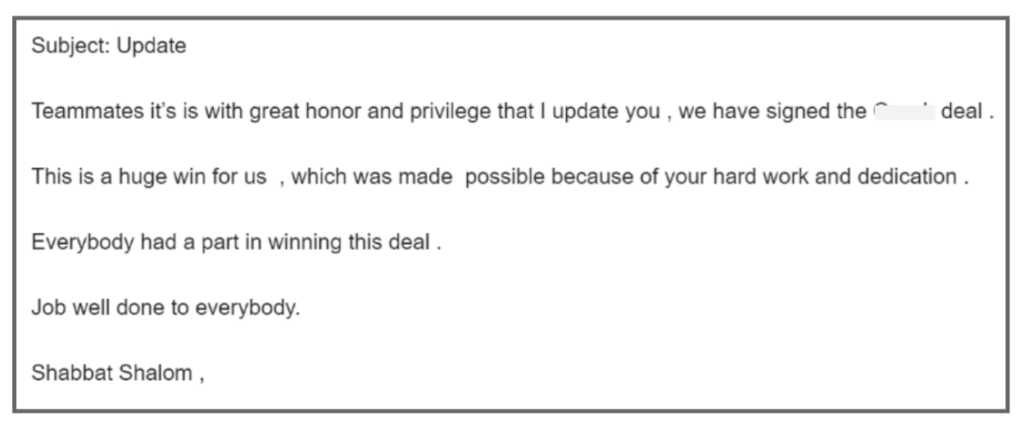
Your organization is a market and all you have is a booth

Raz Mitzna
La Boqueria Market Barcelona during the holidays with the kids. What an experience! Immediately, we were overwhelmed by a whole host of stimuli that the eyes, ears, and heart can barely contain. Hordes of stalls filled with goodies, noises, and colors from all sides. Stall owners were waving their products in front of our faces and smiling salespeople lured us in to taste and buy what they had. To describe it as overwhelming is an understatement. The market makes your head spin, and afterward, you’ll need a nap.
A market is a market is a market
On the one hand, you have the buyers: they come around, they listen, see, and look around for what suits them most amongst the squeals in the hustle and bustle of the market.
On the other hand, you have the sellers: they arrive early, prepare, arrange their goods, shout, offer, market, and sell their products.
It is a barter exchange in its purest form. In the end, anyone can speak about what they “got out of it.”
The “market” that operates every day for you in your organization
As a young Brand Manager at Orange, I remember that requests would come flying at me from all directions: information, tasks, reports, and repairs. Many times, it wasn’t even my manager asking me for things. Everyone wanted something from me. To put it more precisely, they wanted my attention and time.
That’s the way it is in organizations. People from above, beneath, and all sides want something from you here and now. And it comes at you through every possible channel: announcements, messages, emails, elevator posters, a meeting, during a phone call, in a WhatsApp, Slack, a hallway encounter, in the cafeteria and on and on. Look at me. And me. And me. And me.
How does an employee feel?
Employees are flooded and overwhelmed with information and demands, putting them in survival mode with a noise filter, trying to absorb and process only the information they need. It’s entirely possible to imagine every worker with an imaginary “firewall” that acts as a separation between them and the world. No wonder noise filter headphones have become best-selling merchandise — they are representative of the modern world.

And in this busy marketplace, the organization’s messages to their employees are being lost. It’s not surprising that many of the messages do not reach their destination. The organization’s digital or physical billboard, at some point, becomes a “blind spot in the hall.” Like an advertisement banner on a news site that no one clicks on, like a tree falling in a forest that no one hears. It just doesn’t exist.
For a long time already, employees have not been a captive audience
I’m not talking about the fact that they can move on to another workplace. That’s self-evident, especially for the talented ones for whom the workplace is just a station along their journey. I’m talking about a captive audience for your messages. I see this many times in company meetings with employees who are physically present but are detached from what’s happening around them…
Over the years, organizations have literally and metaphorically put people into a room, closed the door, and hit the play button.
But the door is open. Digital, personalized, and interesting communication is how people consume content in their personal lives, and that is exactly what they expect to happen in the organizations they work for. Employees consume their content in a timely and convenient way throughout the day. The critical focus here needs to be on the employee’s attention within the mind of the employee who is engaged in their affairs and not available and open to the organization’s vision, mission, and other blah blah cooperate talk. To catch the employee’s attention, more advanced communication approaches must be taken.
The responsibility of the message delivery is on the sender. Always
In basketball, if a pass does not go well and the ball goes to the opposing team, it will always be considered the fault of the passer. The same goes for the organization’s messaging efforts. If you had a company evening event and not enough people came, if you handed out a gift and didn’t collect enough money for it or if you sent an email and it was not read – this is a warning light, which requires a rethink. There is no fault here but responsibility needs to be taken. If the message is not attractive, or it’s irrelevant and inaccessible – why would people bother to read it, let alone internalize it? An organization that does not see its employees will not be seen by its employees. It’s that simple.
As part of the employer branding diagnostic process, I research the organization’s internal communications. I find tons of unrealized content because it’s unattractive, that doesn’t take into account the employee’s attentiveness. Here is an example of an email to update employees about a huge customer win. Pay attention to the headline and consider why an employee would bother to click on it. If you read further, you will see that this is a generic email that could be sent in any organization. This email has no energy and will not grab the employee’s attention.

Remember the colorful sellers in the Barcelona market? Put in their place a boring salesperson who has nothing exciting to say about their (wonderful) goods. True, some will still buy them — few perhaps. But what about those who don’t?
We do not want to “sell” only to those who have no choice
We will always prefer those who voluntarily choose to consume our content. Forcing employees to automatically and intuitively read internal messages produces resistance. Just think of your time as a school student. You have to be there. The built-in attention level is low. How much and when do employees feel they are students in the classroom?
So, how do you start the change?
1. Ask the employees
The audience is already with you. You can always check-in and see what interests them. Quantitative and qualitative research tools can be used here. For example, you can take a look at how your employees use your content channels? To fully understand this data, you need to pay attention to numbers and behaviors. After gaining a deeper understanding, of course, it is possible to work in a cycle of balance and adjustment.
2. Build a messaging strategy
“Can’t see the wood for the trees” and all the other clichés are true. You have to choose and prioritize. Think about the key messages you want to convey in the coming year. And that’s it. This is your messaging strategy. This is where you develop a content plan for your internal communications. In employer branding, I call it “Employer Assets.”
3. Work on your “content creation” muscles
Start producing quality content continuously. And for those who think it will be easy will find that it can be a significant challenge. Don’t just put text with a video. Make a headline, connect with reality, visualize and understand what an interesting story is and what is more of a one-way North Korean PR style propaganda. Luckily for you, while the world of communication is in jeopardy, it is now easier than ever to find good content people. Hire them to work within the organization or as a freelancer. Build the program and create better content.
4. Develop content distribution channels
When and where does the employee encounter your content? Is it when they are overloaded? During their break? Is it effective? How can it be improved? Of course, this applies to your official offline and online content distribution channels, but also (if not most of all) within the employee life cycle: from candidate experience through starting employment till their last day. At such times, communication with the employee takes place, and here comes the concept of trial and error. Check what they absorb and engage with and they don’t – toss out whatever doesn’t work. Understand who they are and leverage their interests. In short – serve them the “food” they love, allow them to decide when to eat and when they are full. I call these “content snacks.”
Human resources are making significant strides – but there is still a considerable lag
The way people interact with the world is in bloom, and technological progress is advancing all the time. If you understand that your organization is an attention marketplace, and all you have is a booth, it’s time to think and plan how you organize (infrastructure) and operate (daily) your content distribution channels to score within the corporate attention bubble.
And don’t forget, the competition is not only in the minds and hearts of your employees. Other companies also want to attract the attention of your employees – and now they have the tools and capabilities to do so by developing and implementing a content-based employer branding strategy.
